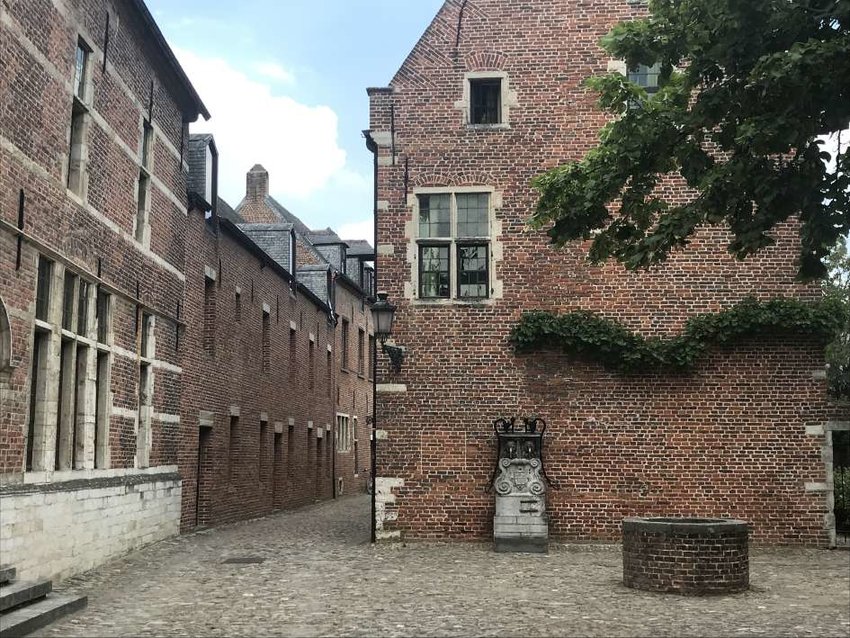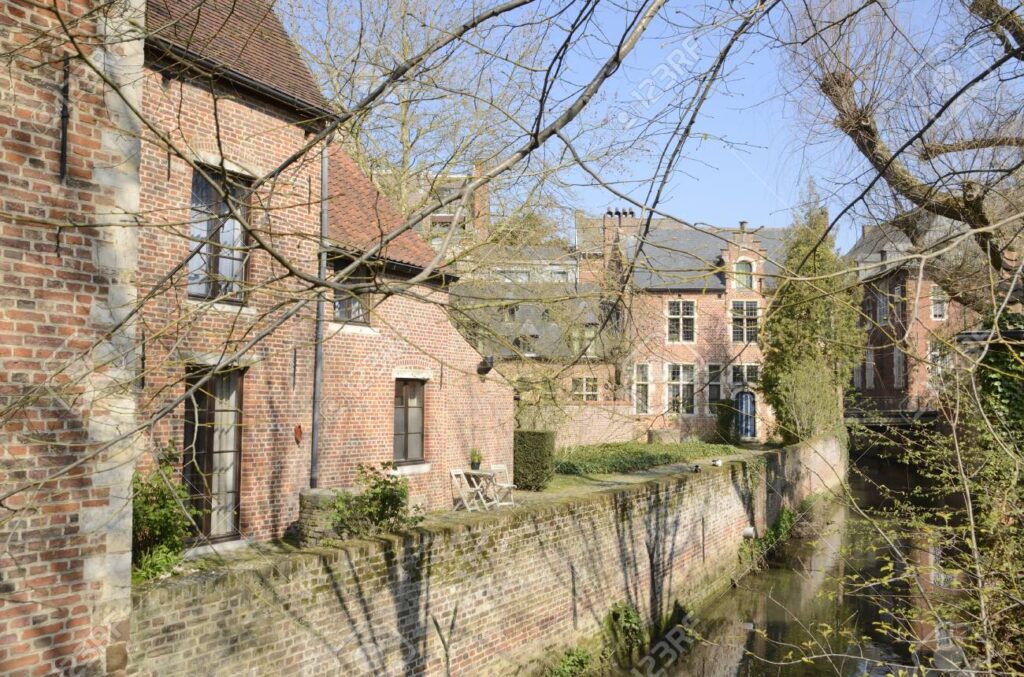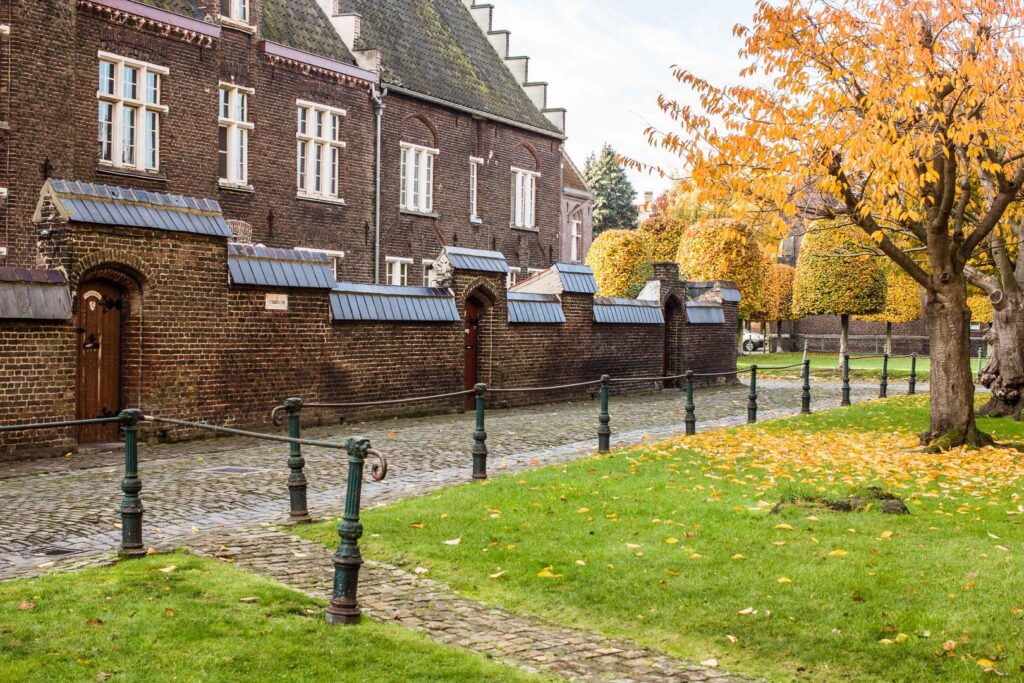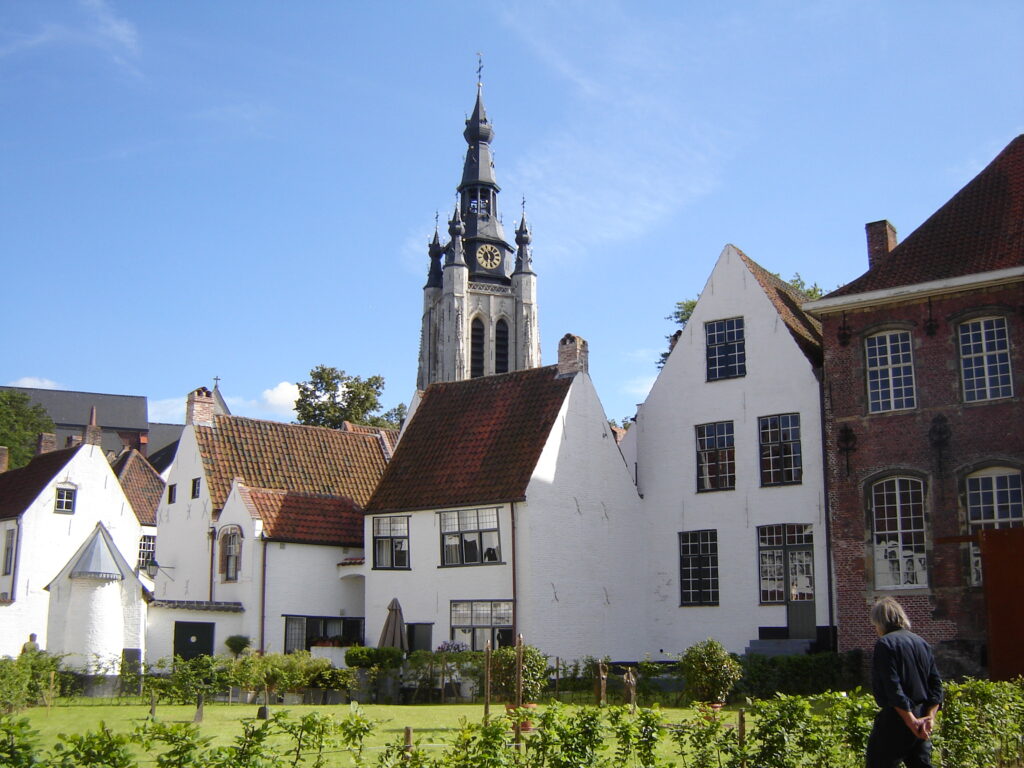The Groot Begijnhof of Leuven is a well preserved beguinage and completely restored historical quarter containing a dozen streets in the south of downtown Leuven. About 3 hectares (7.5 acres) in size, with some 300 apartments in almost 100 houses, it is one of the largest remaining beguinages in the Low Countries. It stretches on both sides of the river Dijle, which splits into two canals inside the beguinage, thus forming an island. Three bridges connect the parts of the beguinage. The complete beguinage is owned by the University of Leuven and used as a campus, especially for housing academics.
Architecture
The beguinage of Leuven has the appearance of a small town on its own, with houses planned along a network of narrow streets and small squares. Five houses date back from the 16th century, three of which still show timber framing. The house of Chièvres was built in 1561, in accordance with the will of Maria van Hamal, widow of William de Croÿ, duke of Aarschot and advisor in political affairs of Emperor Charles V. The characteristic tented roof with the onion-shaped top, refers to the two towers of the duke’s castle in Heverlee (today known as Arenberg Castle).
The majority of the houses dates back from the period 1630-1670. They were constructed in the local, traditional architecture, enriched with some sober, baroque elements. The facades show red bricks with sandstone cross-bar frames for windows and doors. A typical element in the beguinage of Leuven are the numerous dormers, often elaborated with crow-stepped gables and round arched windows.
Many houses have strikingly few and small windows on the ground floor. The beguines were keen on their privacy. Houses with large windows on the ground floor used to be hidden by an additional wall, as is still the case in other beguinages.
The church is an early Gothic basilica with Romanesque elements.





